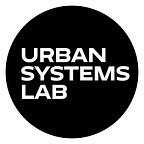Chelsea, NYC, 24th Street
By Yky
The post-COVID world emerges — without translating into practice our expectations for a more sustainable environment. The same causes produce the same effects. Clusters punctuate our lives. To stay safe, we need to stay at home and public space becomes threatening due to unknown asymptomatic contaminants. Public spaces, that once enabled a deepening of social relations, are now being avoided to save lives. New social relations might be enforced, promoting security at the expense of freedom, with nudges occurring on a subliminal level. Developers of gated communities invoke public health as a priority. In this territory, where vulnerabilities can either be relieved or exacerbated, such developments endanger urban resilience. The efforts of citizen associations and NGOs in promoting an ethic of care have already struggled with discouraging indifference before the epidemic struck. Superseding politicians, these organizations are committed to providing vulnerable people with services to meet their basic needs. We are bound together in a community of shared obligations: abandoning interpersonal relations, instead of building together, could become a tipping point with devastating consequences for urban resilience.
This photographic work, Chelsea, NYC, 24th Street, questions our collective ability to address vulnerability issues in urban spaces as a consequence of the COVID-19 crisis. The first picture (D0) illustrates the urban scene: 14 persons walking through the street, paying no attention to a sleeping young man, probably homeless. Their unwillingness to stop becomes a blur, a recognition of the unequal distribution of power and resources in our society. In the center of the picture, the young man appears to “come back to life”; wakes up, moves, stretches, and lies again on the ground without paying attention to his surroundings. The second picture (D+) is developed on silver photographic paper pre-cut in the dark room, where some areas of paper are chemically treated with fixing and developer agents at given dilution and time, and some are not. The different parts are reassembled in the dark room before being printed and exposed to daylight. At D+, the sole young man remains visible after light exposure and darkness development, raising some ambiguous feeling due to his seemingly lively vulnerability. The way darkness develops in time for certain parts of D + highlights the challenges raised by the urban space resilience level in comparison with D0.
More on Yky and his works here. @Ykyurbcitizen
